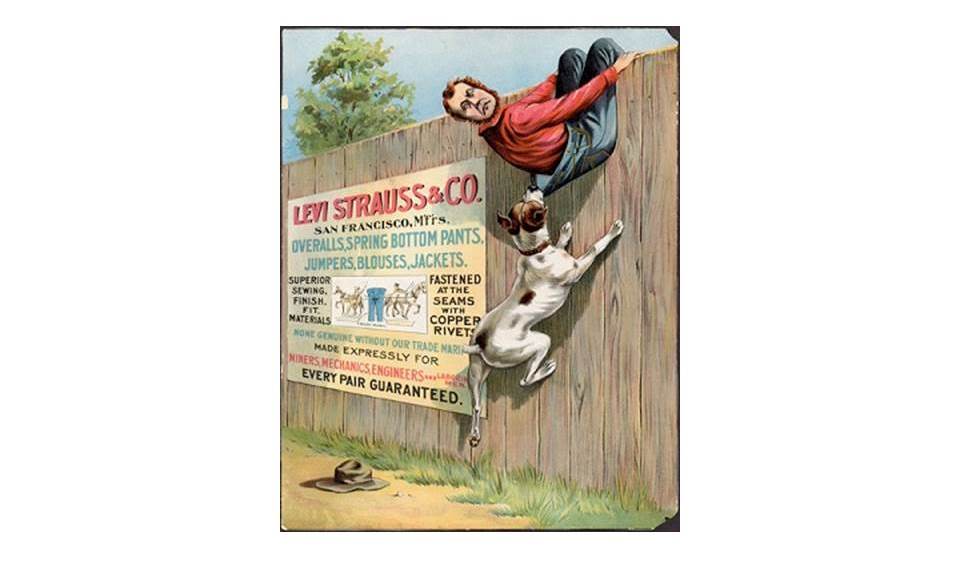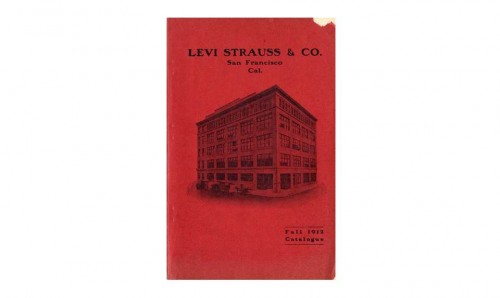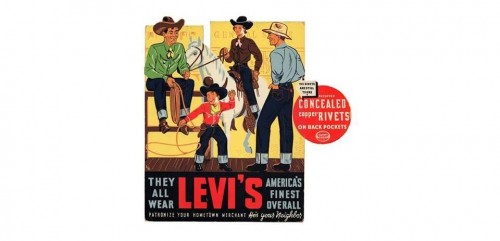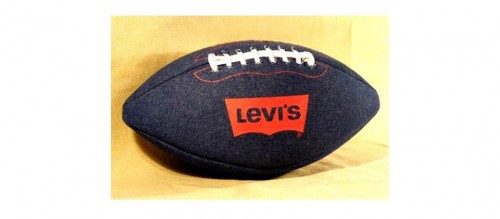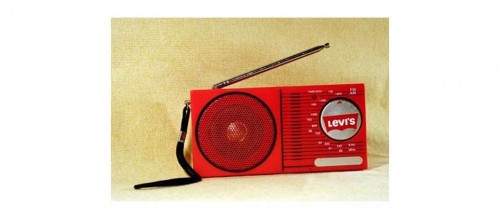Just last week, the Levi’s® brand launched its biggest advertising and marketing campaign in recent years, Live in Levi’s®. It’s the latest campaign in a long history of memorable advertising, starting with our very first marketing asset – the Two Horse® design. For this week’s Throwback Thursday, we take a look back at our advertising through the eyes of Historian Emeritus, Lynn Downey:
When Levi Strauss & Co. introduced the world’s first blue jeans in 1873, it was the only company allowed to make riveted men’s work pants. LS&Co. and inventor Jacob Davis received a patent on the riveting process on May 20, 1873. But you only get to keep an invention like this to yourself for 17 years, so they knew that in 1890 the patent would become public and all kinds of new, riveted products would soon hit the market.
So beginning in the 1880s, Levi Strauss and his managers began to create advertising designed to make sure consumers remembered that LS&Co. created the first, and best, men’s riveted trousers.
One of the first things the company did was to create the Two Horse® design, and register it as a trademark. It was stamped onto the leather patch that had been part of the jeans since 1873, and was a graphic representation of how strong the pants were.
It probably had another purpose: not everyone in the company’s sales territory – the American West – spoke English as their first language. And not everyone could read and write. So giving consumers a symbol to associate with the product was very smart business.
Salesmen traveling the West to meet with their retail customer were armed with colorful flyers demonstrating the quality of the pants, as well. They also carried simple price lists with drawings of the products, so retailers could place the orders they wanted. This became more important as the 19th century came to a close and more and more riveted pants and outerwear were added to the line.
By around 1900 price lists became beautifully designed catalogs, which also carried images of the vast array of “dry goods” the company still wholesaled. This was Levi’s® business for 20 years before the jeans came along: supplying small stores with household and soft goods like bedding, raincoats, linens, and clothing.
As the 20th century got underway Levi Strauss & Co. found innovative ways to get the word out. They began to paint the sides of buildings with the company name and advertising slogans, all over the West. When silent movies came along, LS&Co. created slides about local stores and popular products, which were shown in between movie reels.
Billboards came next, in the 1930s, just as the company began to use the cowboy as the symbol for the jeans and the brand. At the same time, in-store advertising “counter cards” were created as fun, 3-dimensional pieces for store owners to place on the counters (hence the name) where Levi’s® brand products were sold. Newspaper and magazine advertising followed, aimed especially at ranchers, farmers, and various working men. The company had a lot of fun coming up with slogans to represent the products, such as:
“They Wear Like Iron”
“Cut Full, Honestly Made”
“With Strength and Ease, They Always Please”
After World War II, the company expanded its sales territory beyond the West to all of the American states, placing display ads in magazines designed to reach the new, post-war American family.
But what really changed the landscape was television. The company aired its first TV ad around 1966, and it played on a variety of American shows aimed, yet again, at the Baby Boomer family. Pretty soon, just about every type of advertising – counter card, TV ad, newspaper display – featured the most important, new consumer: the teenager. The company also made everyday objects out of denim as giveaways, always emblazoned with a logo.
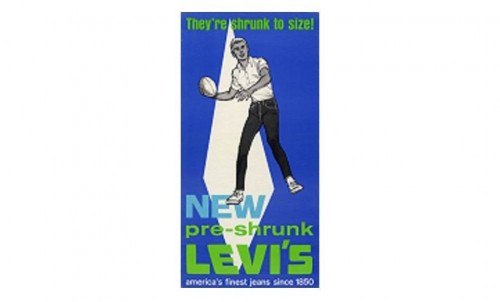 The company knew that music was important to this new crop of kids, and in 1967 took a bold step: hiring The Jefferson Airplane to record radio commercials for the brand. Salesmen took the vinyl records to the radio stations in their territory where they were played to enthusiastic audiences.
The company knew that music was important to this new crop of kids, and in 1967 took a bold step: hiring The Jefferson Airplane to record radio commercials for the brand. Salesmen took the vinyl records to the radio stations in their territory where they were played to enthusiastic audiences.
Going global in the 1960s meant devising advertising for local, and non-American markets. But one thing was popular no matter where Levi’s® products were sold: the poster. Artists from all over the world created images for the company beginning in the 1960s, and still do.
Today, Live in Levi’s® will spread the word about the products and the brand at the speed of cyberspace, but the goal is the same. Informing consumers, telling the company’s story, and taking its stand as the inventor of the blue jean.



